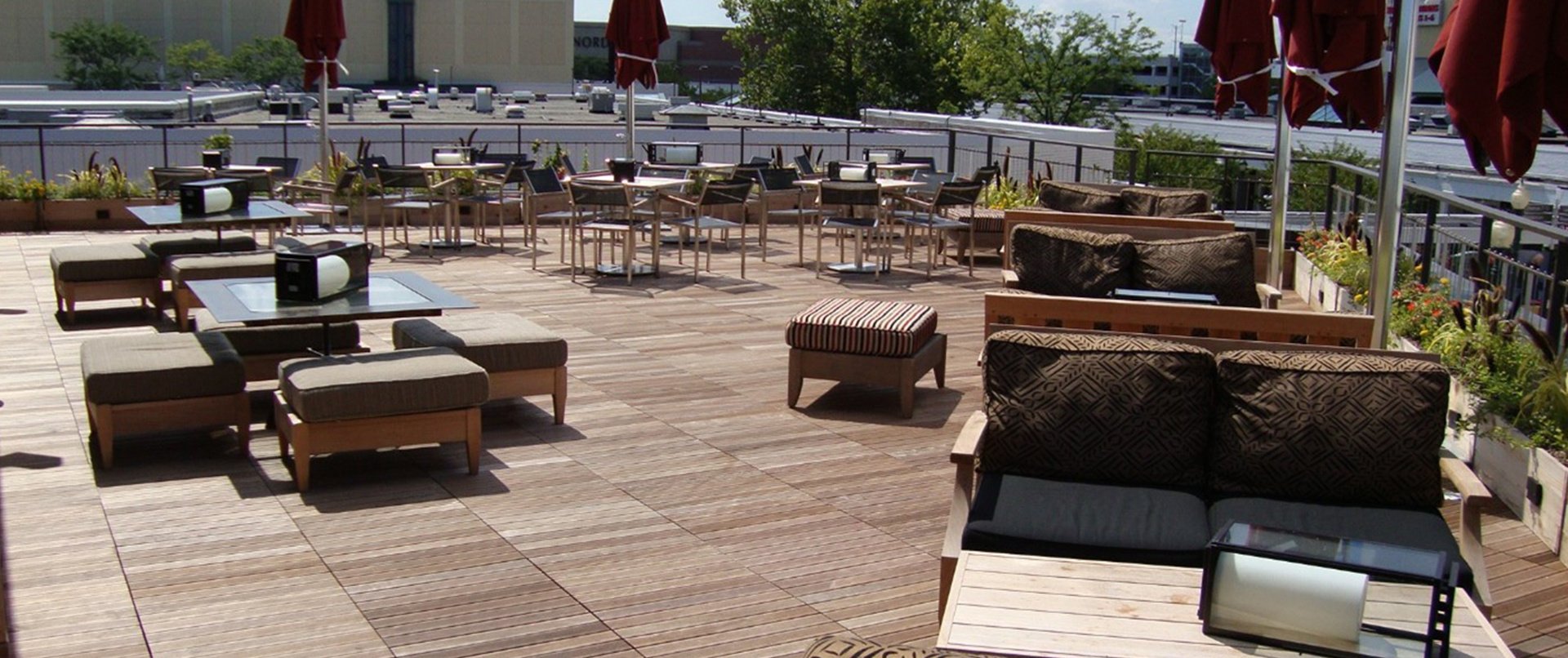Imagine transforming an unremarkable area of your city into the hottest spot in town. With the right pop up park design, you breathe life into underutilized areas and fostering a sense of community. They also have a solid track record for increasing the patronage of local businesses, driving revenue up.
Design is the magic ingredient that dictates how people interact with the space. Raised decks stand out as a powerful tool for creating a flexible and engaging parklet. By incorporating raised decks, you can create dynamic and functional spaces that leave a lasting impact.
What is a Pop Up Park?
A pop-up park is a temporary outdoor space created in urban areas, typically in vacant lots, parking spaces, or underutilized areas. These parks are often installed for a short duration, ranging from a few hours to several months, to provide recreational opportunities, green space, and community engagement in areas where permanent parks may be lacking.
Pop-up parks can feature amenities like seating areas, greenery, art installations, and activities such as yoga classes or food markets, revitalizing urban spaces and promoting social interaction and well-being.
Understanding Raised Decks in Pop Up Parks
When designing pop-up-parks (or parklets), raised decks are more than just platforms – they're versatile tools for defining activity zones (think dining or performance areas and even yoga spaces). A raised deck is useful for maximizing space, seamlessly integrating with the surroundings (think planters or working with uneven terrain), and promoting accessibility with ramps and wider walkways.
However, incorporating raised decks requires careful consideration of safety, material selection (durability, weather resistance, and aesthetics), and adherence to local building codes and accessibility regulations. By understanding these aspects, you can transform raised decks from simple structures into functional and visually appealing centerpieces for your pop-up park.

Tip 1: Maximize Space Efficiency in Your Pop Up Park with Raised Decks
Since pop-up parks in cities are typically used in crowded spaces, getting the most out of every square foot is crucial. Raised decks excel for being flexible. Their modular nature allows for seasonal use, meaning they can be easily disassembled and stored when the park's purpose changes. This is further enhanced by incorporating foldable or adjustable features like benches or planters.
Finally, by creating flexible layouts with modular deck sections, you can adapt the space for various activities, from pop-up cafes to art exhibits or even small performances. With raised decks, your parklet transforms into a space that efficiently caters to a variety of needs.
Tip 2: Blend In or Stand Out - Decks for Every Environment
Raised decks can adapt to their surroundings. In green spaces, planters and vertical gardens create a natural extension. For urban settings, sleek metal and geometric patterns complement the concrete cityscape. Natural materials like wood or stone in either environment add warmth and connection. Biophilic design is an ideal functional aesthetic for these outdoor spaces.
Tip 3: Making Your Pop-Up Park Inclusive
Pop-up parks should be welcoming spaces for everyone. Raised decks can be designed with accessibility in mind by adhering to ADA compliance standards. This includes incorporating features like ramps with proper gradients to ensure easy access for wheelchair users and wider walkways to allow for comfortable maneuvering. By prioritizing accessibility, you create a pop-up park that fosters a truly inclusive community experience.
Tip 4: Engaging Activities and Amenities
Pop-up parks thrive on vibrancy and interaction. Take your raised decks to the next level by incorporating interactive installations. Imagine chess tables built into the deck itself, giant Jenga sets for friendly competition or even sandboxes for the little ones. Don't forget the importance of comfort! Include ample seating areas and shade structures like pergolas or umbrellas.
By providing a mix of activity and relaxation options, your raised decks become the heart of the pop-up park, encouraging social interaction and creating a truly engaging space for the community.
Conclusion
Raised decks are a powerful design tool for creating dynamic and functional pop-up parks. By incorporating the tips above, you can ensure your pop-up park becomes a vibrant hub for the community, fostering a connection with nature and encouraging social interaction. Remember, the beauty of pop-up parks lies in their temporary nature. Embrace creative freedom and experiment with innovative designs to leave a lasting impact on your urban landscape!
Important Notice: Bison Innovative Products recommends that all rooftop deck systems should be installed by a licensed contractor with at least 2 years of proven experience. Plans/designs for a rooftop deck should be reviewed by a safety/structural engineer before commencing construction. The roof must be able to safely carry the static and live load weights of the rooftop deck, and any amenities added along with the appropriate density of any insulation to resist crushing and damaging the waterproof membrane. Adding items such as hardscaping features, hot tubs, or pools to a rooftop deck requires additional guidance and oversight from an engineer. Property owners should research and abide by any building codes and other regulations to obtain the required permits prior to having a rooftop deck installed. Please read all product specifications posted on Bisonip.com to review all information prior to any installation.
.png?width=100&height=100&name=BisonIP-logo-PMS425-2023%20(1).png)



